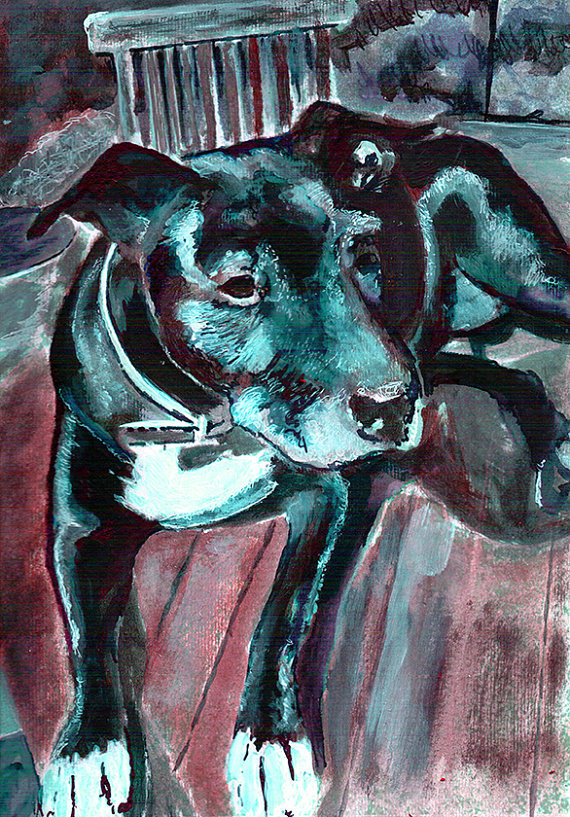
“My Blue Heaven,” was a popular hit song in 1928, but for a lot of dog owners, heaven is their “blue” dog! Blue is among the rarest of coat colors, but it appears in several breeds including the Staffordshire Bull Terrier, Catahoula Leopard Dog, Italian Greyhound, Irish Wolfhound, Poodle, and of course, the Weimaraner. This isn’t to say that “blue” dogs are literally the color of the sky, of course. “Blue” can be as apparent as the stunning color of a Weimaraner, but it may also be an almost-black color (for genetic geeks, black dogs become blue when they are dd on the D locus”). If a dog has that dilution gene, saddles, black patches on merles, patches on a black piebald, brindle colored stripes, and tipping on a sable colored dog will turn to blue.
Blue dilute dogs are genetically black or dark brown with BB or Bb allele) but they are a blue-gray color, like a “blue” Great Dane. Your tip-off is gray pads on the dog’s feet, or a gray nose.
Some dogs are a “progressive” blue. These puppies are born black, but become blue, or bluish grey as adults and keep a black nose. The Kerry Blue Terrier is a fine example of this.
When a dog’s coat has marbling, a gray-on-black that’s more of a pattern than an overall color, it’s probably a blue merle. These dogs always have a black nose, and good representations are found in the Catahoula Leopard Dog and the Australian Shepherd.
If a dog seems almost “navy blue” in color, it’s likely a “blue-ticking” that comes from white x black mottling. These dogs also always have a black nose, such as a Blue Belton English Setter.
NPDD veterans know that we view genetics as the “tall weeds” of our knowledge base, and thus, we welcome additional or clarifying information from folks who really understand color genetics.
Staffordshire Bull Terrier by Oscar Jetson is available as a print here
